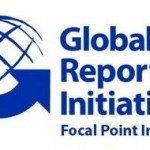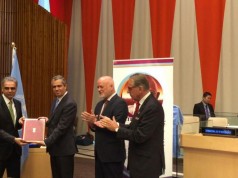 To avoid multiple frameworks and simplify reporting, there has been growing interest in recent years to find synergies in the Corporate Social Responsibility (CSR) field and to combine complementary initiatives.
To avoid multiple frameworks and simplify reporting, there has been growing interest in recent years to find synergies in the Corporate Social Responsibility (CSR) field and to combine complementary initiatives.
With this in mind Global Reporting Initiative (GRI), in association with GIZ India, recently published a new linkage document: “Guidance on Alignment of the GRI G3.1 Guidelines, NVGs and BRR”. The publication was launched at the GRI Global Conference in Amsterdam in May, by Chairman of GRI’s Board of Directors, Herman Mulder.
The linkage document is the first systematic attempt to align India’s national CSR framework with international sustainability reporting frameworks such as GRI’s, thereby positioning India as the first country to implement such an initiative.
The document shows linkages between three CSR instruments: The Business Responsibility Report (BRR) disclosure framework, provided by the Securities Exchange Board of India (SEBI); India’s National Voluntary Guidelines (NVGs), released by the Ministry of Corporate Affairs; and the GRI Sustainability Reporting Guidelines. The publication describes how the business responsibility principles of these three instruments are complementary, and how organizations can use and report against them in a consolidated manner.
“GRI Focal Point India has developed this publication to break new paths, increasing both the quality and quantity of sustainability reports in India,” said GRI’s Focal Point India Director, Dr. Aditi Haldar. “My vision is that through linking GRI’s Guidelines with India’s NVGs and BRR framework, we will unburden existing Indian reporters from the difficulties of using multiple frameworks, and encourage new Indian reporters to take the first steps in reporting, safe in the knowledge that they are using all available guidance.”
The document is particularly valuable for organizations already reporting against GRI’s Guidelines that must comply with the NVG and BRR frameworks. It is also relevant for organizations wanting to develop internal reporting systems to meet such requirements.
The document provides guidance for first-time reporters, unfamiliar with the sustainability reporting process, and it can also be a useful tool for other interested stakeholders such as regulatory bodies, advisory organizations, civil society organizations, and mediating and academic institutions seeking information on organization’s sustainability reports and related areas.
“India has a long history of non-financial reporting, with initiatives going back to the eighties when the government made it a requirement for companies to report information to the authorities on various aspects of their operations including environmental, labour and employment conditions, and health and safety,” said Dr. Bhaskar Chatterjee, Director General & CEO of the Indian Institute of Corporate Affairs (IICA).
“Despite the wide-spread recognition of the value of Corporate Social Responsibility, Indian businesses often struggle to effectively achieve their CSR goals due to complex socio-economic challenges. There is still much to be done to incorporate environmental and social costs and benefits into mainstream financial reporting in India, but the recent developments and initiatives represent a growing positive trend.”
“This pivotal initiative of making the linkage between the GRI Sustainability Reporting Guidelines, the National Voluntary Guidelines and the Business Responsibility Report is in line with the requests of reporting entities that need to streamline their reporting work and look for alignment among the various reporting requirements and recommendations they strive to live up to.”
Check the following link to read/download the linkage document:
https://www.globalreporting.org/resourcelibrary/Guidance-on-Alignment-of-the-GRI-Guidelines.pdf
Source: GRI.














